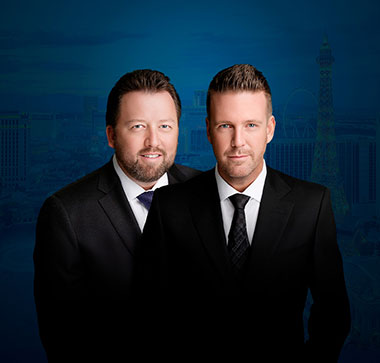
Helmet use can reduce the likelihood of a serious traumatic brain injury, but even wearing full protective gear cannot eliminate it. Often, motorcycle accidents occur due to these nine forms of driver inattention, negligence, or recklessness.
1. Losing the Motorcycle in the Driver’s Blind Spot
The average sedan has a blind spot that measures more than 13 feet. Larger vehicles, including vans and SUVs, can lose 18 feet or more of visibility around them. That blind spot often proves large enough to lose a motorcycle completely. Drivers who do not pay adequate attention to the road around them may completely miss the presence of a motorcycle and fail to realize that they need to pay attention to that rider’s location, which can substantially raise the risk of a severe accident.
2. Lane Crowding
Sometimes, drivers assume that, because a motorcycle does not take up as much room on the road as a passenger vehicle, the rider does not need a whole lane in which to maneuver. Drivers may drift into the motorcycle’s lane or attempt to pass in that lane without leaving adequate room for the motorcycle rider. As a result, the rider must manage his motorcycle in a comparatively smaller space, which can increase accident risk.
3. Lane Splitting
Just as some drivers try to take advantage of the motorcycle’s smaller size on the road to take up more space, some riders may also attempt to use the motorcycle’s smaller size to slip between gaps in traffic. Sometimes, riders will drive between two lanes, trying to slip through traffic to avoid a traffic jam or get to their destination faster. This practice does not leave motorcycles adequate room to maneuver and leads to motorcycles in unexpected places on the road, which can increase the risk of an accident.
4. Left Turn Accidents
A vehicle turning left can quickly turn directly in front of or on top of a motorcycle, making it impossible for the rider to stop in time. Even drivers who think they looked before making a left turn at an intersection may miss the presence of the motorcycle on the road. Drivers’ brains must process a great deal of information very quickly. As a result, the brain starts to filter out things that it does not consider consequential. Motorcycles do not fit the visual pattern of a standard passenger vehicle, so drivers may overlook them without ever intending to do so.
5. Road Hazards
Many road hazards can prove more dangerous to motorcycle riders than they do to drivers of standard-sized passenger vehicles. Broken pavement and potholes can cause a much greater disruption to smaller motorcycles than it would to larger passenger vehicles. Motorcycle riders may also struggle with hazards that do not create a problem for other drivers: grass blown onto the road after mowing, for example, can cause the wheels of the bike to lose traction and the rider to lose control.
6. Poor Weather Conditions
As with road hazards, motorcycle riders often struggle more with poor weather conditions than drivers of larger cars, SUVs, and trucks. Motorcycle riders may struggle to keep their vehicles on the road in poor weather conditions, especially as rain causes visual disturbance around the helmet. Riders may also struggle to pull the vehicle back under control if it slips on wet pavement or ice: a motorcycle has a smaller profile than a standard passenger vehicle, as well as fewer wheels to help it grab the road again.
7. Inebriation
Motorcycles prove no easier to control when inebriated than larger vehicles. In fact, because it takes extra care and attention to drive a motorcycle while reducing accident risk, riders may actually struggle more with inebriation and the limitations it causes. Inebriation can also make it easier for other drivers to completely miss the presence of a motorcycle on the road, since it can lead to tunnel vision or poor visual processing. Drinking and driving also slows reflexes, making it harder for the inebriated driver or rider to avoid a collision.
8. Mechanical Failure
Mechanical failure in a motorcycle can prove catastrophic. If a motorcycle tire blows out, the driver does not have three other tires to help catch the road and prevent an accident. The reverberations of the blowout may cause much more serious injuries to the rider. Other mechanical failures, including engine problems, can also pose a serious hazard for motorcycle riders. Mechanical failures can make it impossible to safely control the motorcycle.
9. Speeding
Motorcycles can quickly push to high rates of speed, both on long, straight stretches of road and when the driver needs to maneuver around tight corners. Speed quickly becomes part of the thrill for many riders, who love the freedom of racing along with the wind blowing past them. Unfortunately, speeding can make it extremely difficult to control any vehicle, including a motorcycle, safely.
Speeding riders may not adequately negotiate turns or road hazards. Inexperienced riders, in particular, may substantially increase accident risk as they raise their rates of speed. Other drivers who speed can also increase the risk of an accident with a motorcycle: at higher rates of speed, those drivers may struggle to properly process everything going on around them, and they may have more trouble seeing or responding to the presence of a motorcycle.
Motorcycle accidents can have severe, life-altering consequences. Victims may struggle with anything from severely broken bones to spinal cord injury, traumatic brain injury, or amputation following an accident. If you suffer serious injuries in a motorcycle accident, contact an experienced motorcycle accident attorney as soon after your accident as possible to learn more about your legal rights.
Benson & Bingham Accident Injury Lawyers, LLC
626 S 10th St
Las Vegas, NV 89101
702-382-9797

